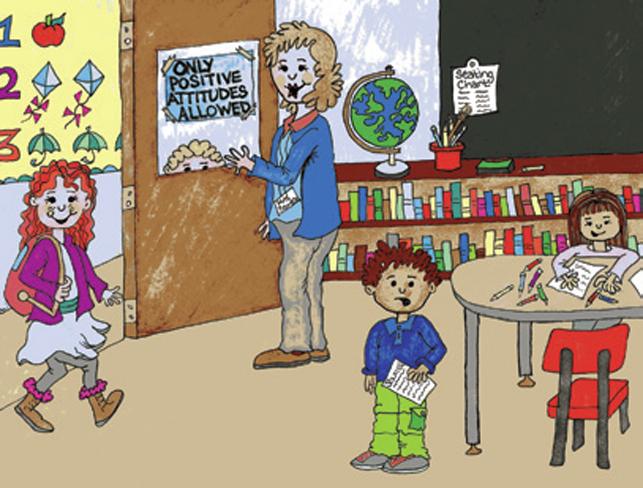
Managing Student Behaviour (Occasional Teachers' Column)
The greatest professional challenge for most occasional teachers is classroom management. Occasional teachers have to adjust quickly to a variety of classroom situations. Students often feel free to treat occasional teachers in ways that would not be tolerated by anyone else in the school. The challenges for occasional teachers are to keep a positive attitude, to be effective, and to be respectful toward students while dealing with a wide range of behaviours. Dr. Glen Latham of the Substitute Teaching Institute at Utah State University describes five skills for effective behaviour management. This column outlines the first skill. Future columns will present skills two through five. Getting and Keeping Students on Task Students learn when they’re actively engaged and focusing on purposeful, meaningful work. When students are on task classroom management issues are minimized. Here are two strategies to consider as you start the day. Begin immediately: Reduce the time between the beginning of class and the start of the lesson. Greet students (older students in particular) at the door, introduce yourself, and direct them to instructions you have posted. Many effective occasional teachers start the day by having students complete a seating chart, make name tags, write a journal entry, or read a short story. Introductory activities will quiet most of the class and allow you to focus on potentially off-task students. Walk around cueing students: As soon as you have oriented students to the task, begin to walk around and encourage them to get started. Your proximity can often prevent problems. Make eye contact as you move about the room. Acknowledge good behaviour. Stand near students who are off task. and point to what they are supposed to be doing. Do not interrupt your lesson to deal with inattentive or mildly disruptive students. Instead, use proximity, a glance, a pause; use students’ names when you speak to them. How you speak to students will affect their behaviour. Here are 10 strategies that will increase student compliance.
- Descriptive requests will bring better results than ambiguous requests. “Please sit in your chair facing forward, looking at me” rather than “Please pay attention.”
- Start requests. Use positive requests to start an appropriate behaviour rather than requests to stop a misbehaviour. “Please start your math assignment” versus “Please stop arguing with me.”
- Direct requests increase compliance more than questions. “You need to sit down” rather than “Would you please sit down?”
- Two requests only. Make your request twice only, not several times.
- Proximity. Make the request from nearby rather than from a distance.
- Eye contact helps convey the message.
- Modulate your voice. Make your request in a soft, firm voice and don’t allow your volume or pitch to increase. Raising your voice signals that you are losing control.
- Time. Give students time (five or 10 seconds) to comply. Do not converse with a non-compliant student. Look at the student, restate the request if necessary, and wait for compliance.
- Keep your tone neutral. Respond to behaviour in a calm, matter-of-fact way rather than showing emotion, yelling, or giving an ultimatum.
- Reinforce positive behaviour. All too often teachers request a specific behaviour from students, then fail to notice a positive result. If you want more compliance, genuinely reinforce the new behaviour as soon as possible.
Adapted from I Am the Teacher: Effective Classroom Management Techniques for Occasional Teachers. Available from shopETFO. Dr. Glen Latham’s principles are used with permission